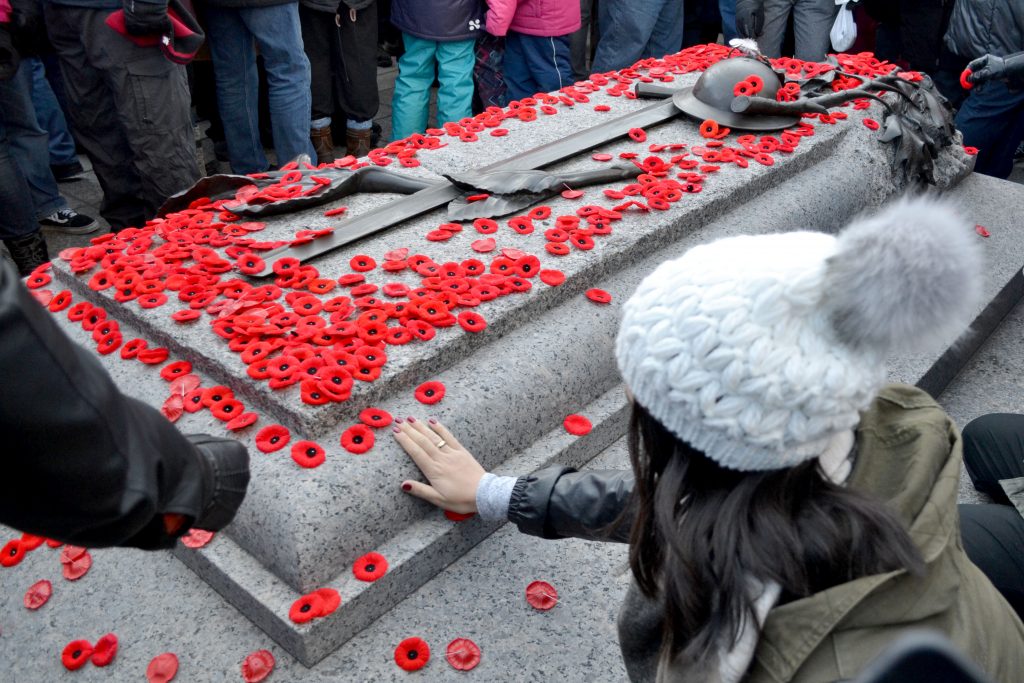Memorials leading up to Remembrance Day aim to remind Canadians of sacrifices
By Taylor Retter
For the second year, in advance of Remembrance Day, 117,000 virtual poppies were projected nightly onto the facade of Centre Block, falling softly one after another from the Peace Tower.
Each poppy represented one of Canada’s fallen since the beginning of the First World War in 1914. While “poppy drops” are customary during Remembrance Day commemorations — typically in the form of pinning the floral emblem on a memorial wreath or placing it on the base of a cenotaph — the legion said it hopes that having the digital light show encouraged Canadians and tourists on Parliament Hill to “stop and take a moment to remember and think of the freedoms they enjoy in Canada,” according to a statement on the organization’s website.
Legion president David Flannigan called the poppy projection “an inspiring visual memorial to all our fallen.”
There were also two screens on Parliament Hill projecting images of fallen soldiers throughout the light show — photos submitted from Canadians across the country.
The legion’s more conventional National Poppy Campaign began in late October and ran until Nov. 11 annually, and all donations are used to support veterans programs. In 2015, for example, $19 million from the campaign was raised for initiatives to help former military personnel.
Meanwhile, at the Canadian War Museum, another memorial took place ahead of Remembrance Day.
As part of the Vimy – Beyond the Battle exhibition, there was a ribbon wall meant to commemorate Canadians. Visitors to the museum could write the name of a person whose contributions, in times of war or peace, they wished to recognize.
The striking display allowed museum visitors to pay tribute to friends and family, and museum officials said it’s the first time the LeBreton Flats military heritage centre had done the activity on such a scale.
According to Sandra O’Quinn, a museum learning specialist, the interactive components of the exhibit were extremely well received
.
“They have been very popular—judging by the sheer quantity of materials we have ordered over the course of the show,” she said.
Another way, she said, that visitors appreciated the opportunity to participate in a meaningful way was through the “Memory Garden” activity, where visitors were invited to write a personal message to someone they would like to remember on paper made of poppy seeds. The messages will be planted on the roof of the Museum in the spring and grow a garden of poppies.
“The Battle (of Vimy Ridge) was the first time all four divisions of the Canadian Corps fought together in the war, and it was a hard-won victory against a difficult enemy position,” said O’Quinn, referring to the landmark struggle against the German occupiers of France in April 1917.
“Although it did not change the strategic direction of the war, the victory at Vimy Ridge was a tactical victory and a significant morale-booster for Canadian troops. For some Canadians, Vimy has evolved to become the one wartime symbol with which they identify.”
The Vimy – Beyond the Battle exhibition was open at the Canadian War Museum until Nov. 13 in the Lieutenant-Colonel John McCrae Gallery.

